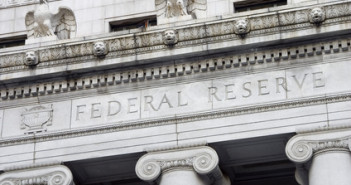Early in 2013, the US economy showed signs of accelerated growth through a wide array of economic indicators. This hasn’t convinced the Federal Reserve to alter its policy, and perhaps with a good reason.
While the US avoided big tax hikes in a last minute deal, the expiration of the payroll tax cut and the sequester do seem to counter growth. If the US economy continues growing nicely despite these measures, it will certainly be a big winner and a locomotive for the whole world. Yet not everybody is convinced.
* This article is part of the April 2013 monthly forex report. You can download the full report by joining the newsletter in the form below.
The cuts in government spending already took their toll in the fourth quarter: the US economy grew by only 0.4% on an annual basis. The Fed said that the economy “paused”. One of the main reasons for this almost inexistent growth (first estimated as a 0.1% contraction) was a huge cut in defense spending.
One tax hike that did slip into 2013 is the expiration of the payrolls tax break. The reversal of this fiscal easing measure leaves more money in the pockets of Americans. While a few retailers reported lower sales in February, it is quite hard to put the finger on this tax. Retail sales for February were eventually positive.
What we don’t know at the moment is the impact of the sequester: as part of the debt ceiling deal in the summer of 2011, Republicans and Democrats agreed on automatic spending cuts that would be enacted if parties wouldn’t be able to reach an agreement.
The elections of November 2012 left the broad political picture unchanged and the parties reached only very few agreements so far. So, government spending is being cut. Tackling the long term budget deficit of the world’s No. 1 economy is an important goal, but it isn’t necessarily the perfect timing and the perfect quantities.
Ben Bernanke warned against front loading too much debt reduction right now. Against the fiscal tightening, the Fed continues offering monetary stimulus.
Since announcing QE4 in December and starting a policy of open ended QE and qualitative time frames for changing the interest rates, the Fed had two decisions in 2013 and made no policy changes. No meeting is scheduled for April, but minutes from the March meeting are due.
In the previous two editions of the meeting minutes, it has been “revealed” that there are also hawks in the FOMC: some members don’t support the easy policy and/or wish to see QE unwinding towards the end of 2013. This is due to improving conditions or fear that with an ever-growing balance sheet, it will be hard to exit.
Each publication of the meeting minutes resulted in a stronger dollar due to these hawkish statements. This could happen in April as well. Yet it’s important to remember that the doves are in full control of the Fed.
The economic recovery really needs to “twist the arm” of Bernanke for seeing a change now. And how is the economy doing?
Year after year, the US economy enjoys a good start to the year, but the recovery doesn’t accelerate. Is it happening again?
- Housing: Existing home sales remain stable, but new home sales fell after climbing higher. Prices are going steadily higher.
- Manufacturing: PMIs are on the side of growth (50+) but the recent ISM number has been significantly lower.
- Services: So far, we’re seeing strong growth in America’s biggest sector. A score of 56 and a healthy employment component in February were certainly encouraging.
- Jobs: the gain of 236K jobs in February was impressive. Did the trend continue in March? Weekly jobless claims have reached 5 year lows by falling to averages around 340K. Yet again, the recent rise to 357K is somewhat worrying.
The US will publish the initial GDP estimate for Q1 2013 towards the end of April. Expectations are high: a growth rate of above 3%, which is already above stall speed and perhaps even a “self-sustained” recovery.
Dynamics of forex trading have changed and at the moment positive figures support the dollar across the board (not only against the yen) and weak figures hurt the greenback across the board.
Positive figures from the US are needed to maintain these dynamics. If we’ll see a weak jobs report accompanied by other signs of weakness and a crisis in Europe, the dynamics could reverse to the “risk on / risk off” model where the dollar is sought after in times of trouble and sold when things improve.
At the moment, it seems that the US recovery has really accelerated, and that the road is just a bit bumpy.
